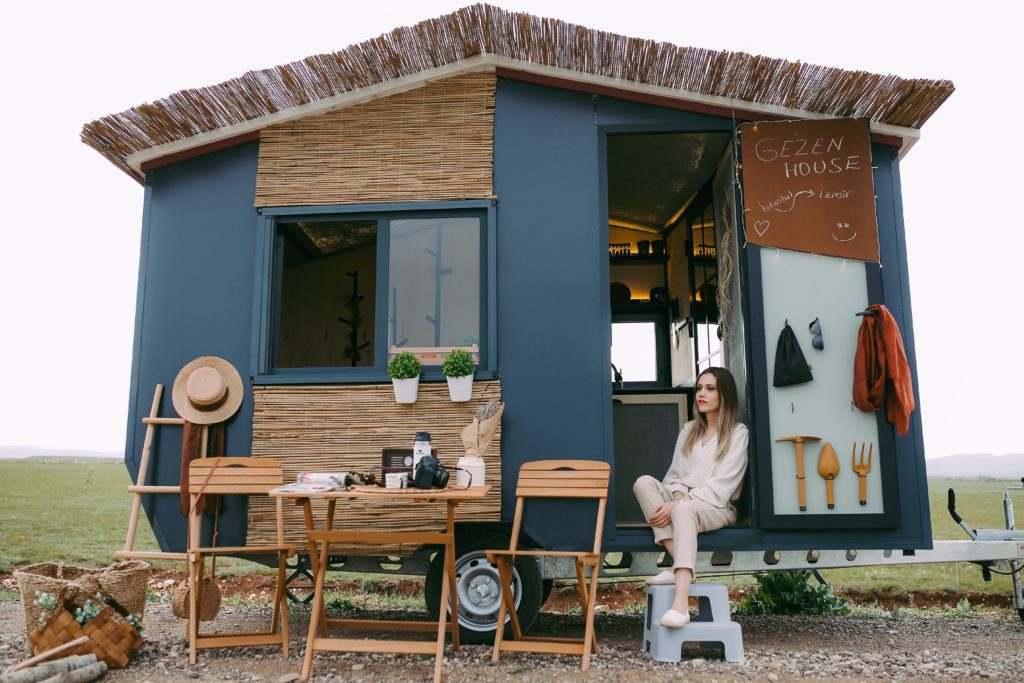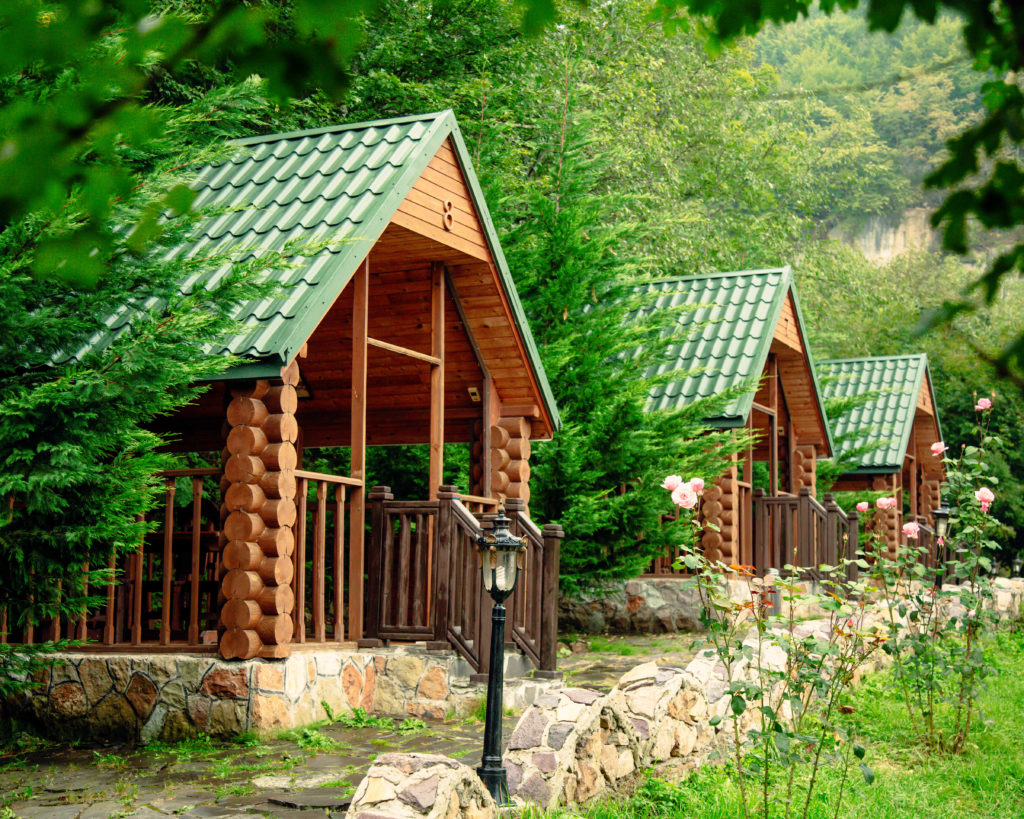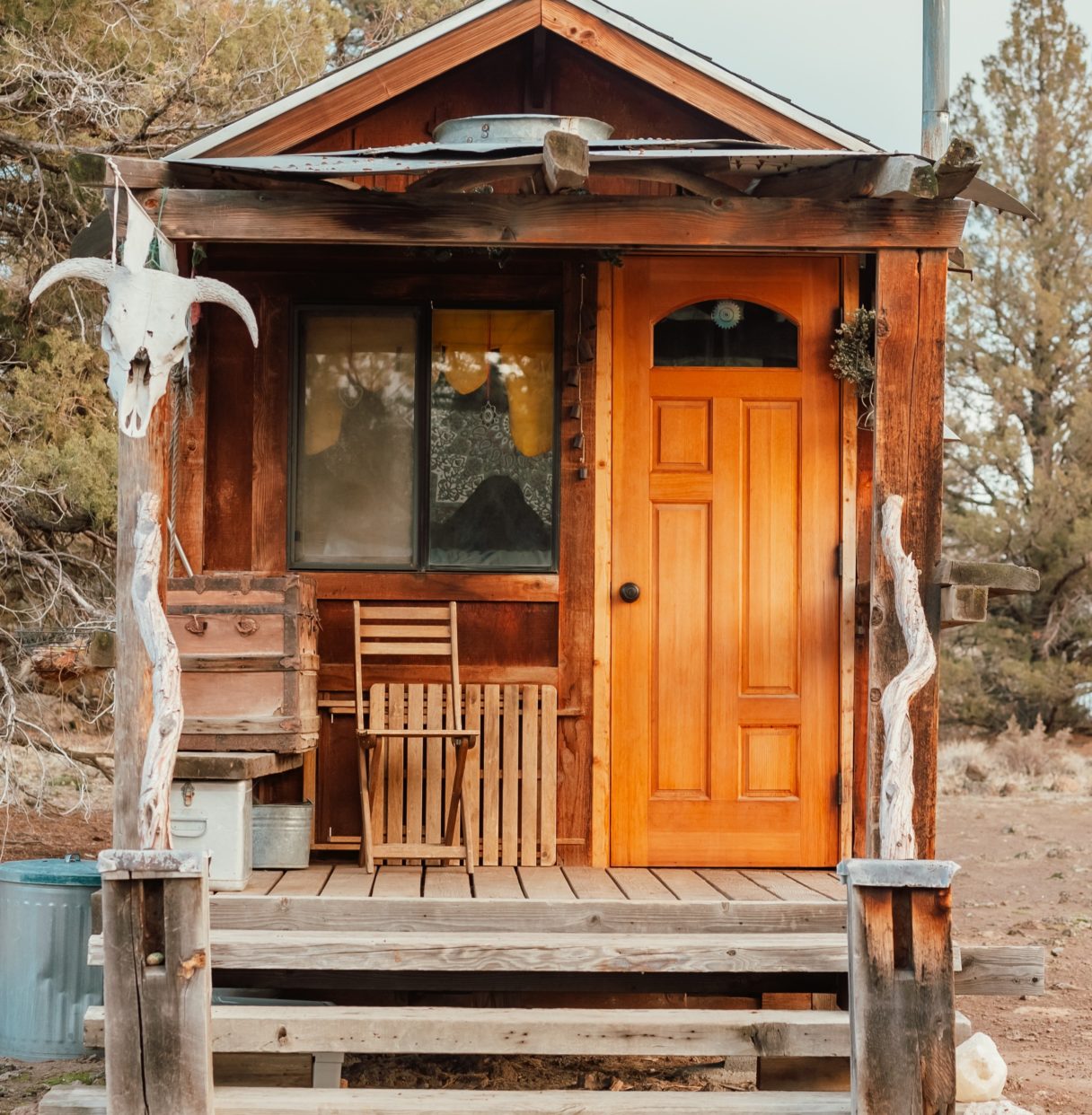The tiny house, or micro house in French, is a home that has been very popular in recent years and has gained popularity in recent years because of its size, durability, and relatively low cost. Built on a small area, usually less than 25 m, it now meets the needs of people who want to live simply and independently.
In this article we will explore why tiny houses have become so popular, the advantages and disadvantages of living in a tiny house, and some of the key considerations for those considering building or buying one.
The Tiny House, the new eco-responsible lifestyle
The growing popularity of tiny houses is due in part to a growing awareness of the environmental impact of everyday life. Tiny houses are often built with sustainable and environmentally friendly materials, making them a greener option than larger houses. In addition, tiny houses are often designed to maximize the use of space, which can help reduce the energy consumption needed to heat or cool the space.
In addition to their positive environmental impact, tiny houses also offer practical benefits for those who live in them. Firstly, they are often much cheaper than traditional houses, making them an attractive option for those looking to save money or live on less. In addition, these mini homes are often mobile, which means that their owners can move them easily if they need to move for any reason.
Tiny houses are a true concentrate of functionality. Despite their small size, they are equipped with everything you need to live comfortably: a fully equipped kitchen, a bathroom, a sleeping area, etc. Their design is based on the optimization of space, with clever storage, multifunctional furniture and compact equipment.
If you are considering building or buying a tiny house, there are several key considerations. Firstly, it is important to determine what your priorities are in terms of daily living, including space and amenities. In addition, you must be prepared to learn to live more minimally and find creative ways to maximize the space available. Finally, it is important to check local laws and regulations to ensure that you can legally live in a tiny house.
Ultimately, tiny houses are an attractive option for those looking to live in a more sustainable, economical, and minimalist way. However, it is important to understand the pros and cons of this living option before planning.


What is the cost of a tiny house?
The cost of a Tiny House can vary considerably depending on many factors, such as size, building materials, equipment, and finishes. In general, the cost of a Tiny House can range from around €15,000 to €80,000, or even more depending on specific requirements.
It is important to bear in mind that the cost of these minimalist homes can also depend on the region you live in and the builder you choose. It is advisable to research different Tiny House builders and ask for quotes to get a better idea of the cost.
Can I put a tiny house on my land?
In French-speaking Switzerland, the legislation concerning Tiny Houses depends on the cantons and communes. In general, to be able to install a Tiny House on a plot of land, it is important to check the rules and regulations of your municipality, particularly in terms of town planning and construction.
In some cases, Tiny Houses can be considered as light and mobile dwellings and may be subject to specific rules regarding construction and installation. It is therefore important to check with the commune or town to find out what rules apply.
In addition, if your land is subject to a subdivision regulation or a local development plan, you will need to check whether the construction of a mobile home is allowed or not. It is also important to ensure that the land has access to utilities such as water, electricity and sanitation.
In summary, it is possible to put a Tiny House on a plot of land in French-speaking Switzerland, but it is important to check the local rules and regulations to find out if this is allowed and if the Tiny House is considered a legal construction and complies with the town planning rules in force.
How to build your own tiny house?
Here are the steps and things to consider:
First, you need to decide on the type of construction you want to use. Most tiny houses are built with a wooden frame, but it is also possible to use other materials such as straw or concrete. In addition, the tiny house can be built on wheels to be mobile or on a fixed foundation. It is therefore essential to choose the type of construction that will meet your needs. In any case, before starting the construction, it is essential to find out about the administrative procedures necessary to obtain any authorizations, such as building permits for a house on a foundation. It is also vital to determine your budget beforehand to adapt the project accordingly.
Next, it is recommended that you work with an architect or builder to develop house plans that suit your needs and tastes. Timber frame house models are particularly popular for tiny house construction. A crucial aspect is the RT2012 thermal regulation, which imposes certain standards to ensure efficient insulation. This means choosing suitable insulating materials to be used in the shell and finishing. Once the plans have been drawn up, construction can begin. It is recommended that you work with a project manager or construction supervisor to monitor the site. For the construction of the structure, it is usual to start with the foundations, the assembly of the framework and the laying of the roof.
Then it is time to tackle the interior by installing the partitions, flooring, and joinery. Finally, the finishing touches, such as painting, wall coverings and doors, can be done. Finally, it is important to note that building a tiny house requires an investment of time and money. However, because of their small size, these homes are often less expensive than traditional houses.
In conclusion, building a tiny house can be an exciting and satisfying venture for those seeking an economical, environmentally friendly, and flexible home. However, as with any construction, it is important to be aware of the building regulations and to work with qualified professionals to ensure the safety and quality of the tiny house.
How to get electricity in a Tiny House?
There are several options for getting electricity in a tiny house, including:
Connecting to an electricity network
If your Tiny House is installed on land that has an electricity connection, you can request a connection for your home. You will need to call in a qualified electrician to connect your Tiny House to the town or city’s electricity network.
Installing solar panels
Solar panels are a popular option for powering a Tiny House. Solar panels can be installed on the roof or on the land around the Tiny House. This option is environmentally friendly and economical but requires a large initial investment.
Electric generator
If you need a portable source of electricity for your Tiny House, you may consider purchasing an electric generator. It is important to choose an electrical generator that is suitable for your energy needs and to use it appropriately to avoid safety risks.
It is important to consult a qualified electrician about the options available to supply your Tiny House with electricity and to ensure a safe and compliant electrical installation.
What kind of heating in a Tiny House?
There are several options for heating a Tiny House, including:
Wood-burning stoves
Wood-burning stoves are a popular option for heating a tiny house as they are efficient and economical. Wood-burning stoves are also aesthetically pleasing and can add a rustic charm to your home. However, it is important to follow safety rules when installing and using wood-burning stoves.
Electric heating
If your Tiny House is connected to an electricity network, you may consider using electric heating to heat your home. Electric radiators and convector heaters are common options but can be expensive in terms of energy.
Gas heaters
Gas heaters are an effective option for heating a Tiny House. Gas heaters are available in portable and fixed versions and are often less expensive than electric heaters.
It is important to consider the size of your home, your heating needs and your budget when choosing a heating system. It is also important to follow safety standards when installing and using your heating system.
How long does a tiny house last?
The lifespan of a Tiny House depends on several factors, including the quality of the materials used in the construction, regular maintenance, and the use of the house. In general, with proper maintenance, it can last as long as a traditional house. These green homes are often built with high quality materials such as solid wood, steel or aluminum, which allows them to withstand weather and climate change. However, as with any house, regular maintenance is essential to prolong its life.
It is important to bear in mind that Tiny Houses are often built on trailers, which can be subject to faster wear and tear due to their use on the road. This means that it may be necessary to replace certain parts of the trailer, such as tyres or brakes, over time.
In summary, with good quality construction and regular maintenance, a Tiny House can last as long as a traditional house. They represent the future of sustainable, energy-efficient housing.

